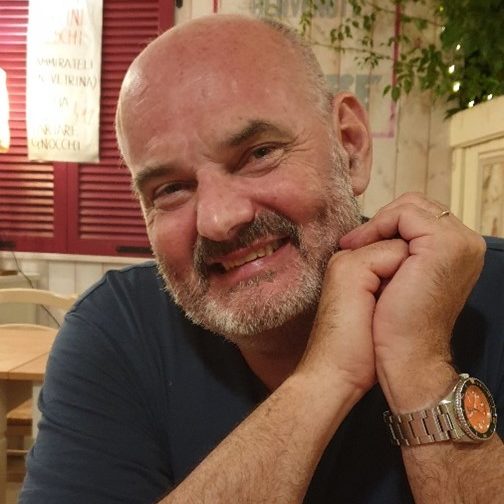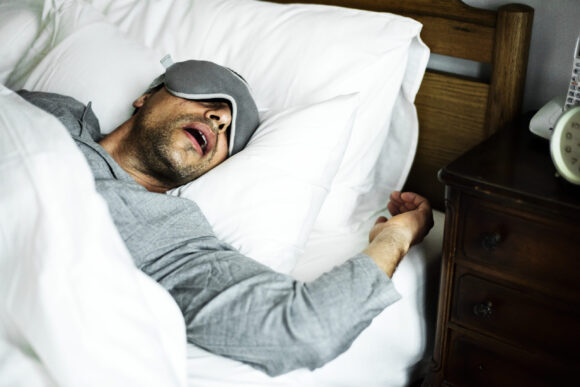The likelihood that you or somebody you know has sleep apnea is high. Globally, more than 1 billion people suffer from sleep apnea.
However, only 20% of those that are suffering get diagnosed. Sleepiz believes that sleep apnea should be diagnosed at the comfort of one’s home, so read on to find out what sleep apnea is, its causes and symptoms, and how Sleepiz can help you solve it.
What is Sleep Apnea?
Snoring is a common phenomenon that increases with age. Nearly every second person produces nocturnal sounds but there is no respiratory arrest. However, this differs when a person has sleep apnea, one of the most common sleep disorders, abbreviated as SBAS. The term sleep apnea actually comes from the Greek word “A-Pnoe” which means something like “without breath.”
Simply put, sleep apnea causes irregularities in one’s breathing during the night, where the person stops breathing from 10 seconds up to five minutes. Sleep apnea is dangerous because the breathing interruptions during sleep can extend to a prolonged, threatening respiratory arrest.
There are no exact figures about how often sleep apnea occurs – not every snorer goes to the doctor. However, it is estimated that up to 10% of the adult population between the ages of 30 and 60 are affected by sleep apnea.
The frequency increases with age. Especially overweight people are concerned: around 80% of patients with sleep apnea syndrome are obese. Men are also more likely to be affected by sleep apnea from a younger age, but women are equally affected as men from menopause onwards.
Obstructive Sleep Apnea (OSAS)
Obstructive sleep apnea syndrome is the most common form of sleep apnea. During sleep, the muscles of the soft palate, which is located behind the uvula, become slack and the tongue falls back. As a result, the airways close and the sleeper gets too little or no air at all.
The lack of respiration decreases the oxygen content in the blood (intermittent hypoxemia) and leads to a deficiency supply of the tissue. As a result, the body starts a “wake-up reaction.” It abruptly activates the respiratory muscles of the diaphragm and chest, the heart increases its power and blood pressure rises.
The sleeping person usually wakes up for a short time. This awakening caused by sleep apnea is called arousal by physicians. The person then resumes their breathing, usually followed by several deep breaths. The respiratory arrest may take from ten seconds up to two minutes and occur up to 100 times a night.
Interestingly, the person concerned usually does not remember the next morning that they had woken up at night because of a lack of oxygen.
Central Sleep Apnea
The second form of sleep apnea is central sleep apnea. The trigger of this form is a malfunction in the central nervous system (CNS). Although the upper respiratory tract remains open, the respiratory muscles of the chest and diaphragm do not move sufficiently.
Central sleep apnea mainly affects the elderly and natrually occurs at high altitude. This variant of the breathing disorder is often harmless and usually does not need to be treated, but if it occurs in combination with heart failure or nerve disorders, like multiple sclerosis, then you should consult a doctor as soon as the onset of the phenomenon.
Noticeable Symptoms
Typical symptoms of sleep apnea are repeated respiratory murmurs during sleep. The respiratory arrest lasts between 10 and 300 seconds and occurs more than five times per hour. Most physicians will definitely recommend treatment if the respiratory arrests occur 15 or more times per hour.
The respiratory arrest is followed by periods of excessive breath (hyperventilation) and loud and irregular snoring when the person is trying to catch their breath. Partners and relatives notice not only the snoring but also the breathing pauses at night, while the person concerned is not aware of it.
Sleep apnea has consequences. In general, sleep is disturbed, so people with sleep apnea suffer from a chronic sleep deficit and daytime fatigue. They are also forgetful and may concentrate poorly.
This also increases the risk of accidents in traffic. Some people with sleep apnea suffer from anxiety or depression. In part, the respiratory disorder leads to headaches (especially in the morning) and reduced sexual desire. Men may experience erectile dysfunction.
Children may also be affected by obstructive sleep apnea syndrome (OSAS). According to experts, respiratory disorders may also play a role in sudden infant death syndrome. Older children with OSAS are often sluggish and cumbersome, often noticed at school due to poorer performance.
Sleep Apnea Causes and Risk Factors
Several factors favor the development of obstructive sleep apnea syndrome. These include:
- Too high body mass index (obesity)
- Age (the older the more vulnerable to sleep apnea)
- Gender (men are more affected than women)
- Taking sleeping pills or sedatives (muscles on the palate relax faster and close the airways)
- Deviations in the structure of the facial skull (craniofacial peculiarities): An example is a too small or falling back lower jaw or a crooked nasal septum
Other risk factors include smoking, alcohol, pregnancy, or existing conditions such as rheumatism, acromegaly, hypothyroidism, polycystic ovarian syndrome. Also, a large tongue, enlarged tonsils, nasal polyps, or fat and connective tissue at the entrance of the respiratory tract may also promote sleep apnea. Generally, irregular periods of sleep can aggravate these symptoms.
The central sleep apnea is rare and is caused by severe heart failure or disorders in the central nervous system (CNS) like AMS (Lou Gehrig’s disease) or multiple sclerosis. These diseases destroy nerves which cannot give a signal to breath from the brain to the respiratory muscles. In rare cases, this problem can occur in little children based on a genetic background and is then named Undine’s Curse syndrome.
How to Diagnose Sleep Apnea
Snoring often falls on the partner first. If the respiratory arrest occurs, it is advisable to go to an ear, nose, and throat doctor, or a pulmonologist. There is not one sleep apnea test but rather different methods of diagnosis are used. The doctor will first ask you about your medical history (such as an anamnesis), for example:
- Are any pre-existing diseases known?
- Do you suffer from sleep disorders?
- Do you take any medications (e.g. sleeping or sedative drugs)?
- What about your alcohol consumption?
- Do you take pills?
- What sleep habits do you have? (Since your partner often knows this best, they should also take part in the survey if necessary)
The doctor or a specialist then looks for anatomical abnormalities in the nose and throat area, for example, bite aberrations (position of the jaws to each other), a curvature of the nasal septum, or nose and throat polyps. The paranasal sinuses can be visualized well-using imaging techniques.
Sometimes a walk to the sleep behaviour is inevitable. Physicians analyze sleep patterns, respiration, and other factors that indicate sleep disturbances through a sleep apnea screening.
As a rule, patient’s stay in the sleep laboratory lasts one to two nights. There, doctors use electrodes on the skin to measure, among other things, the airflow of the respiratory system, the pulse rate, the oxygen content in the blood, and the movements of the chest. All this is summarized under the term polysomnography.
In some cases, additional sleep examinations are necessary. During the Multiple Sleep Latency Test (MSLT), the patient sleeps for a short period of about 20 minutes several times a day, two hours apart. The test measures the tendency of falling asleep and the degree of daytime tiredness.
Sleep Apnea Disease Course and Prognosis
Obstructive sleep apnea should be treated unconditionally because it affects one’s health as well as the professional and private life. Patients with daytime sleepiness have a three to sevenfold increased probability of a road traffic accident.
Sleep apnea is associated with high blood pressure, congestive heart failure, coronary heart disease, and cardiac arrhythmias (e.g. atrial fibrillation). As well as likely a link with pulmonary hypertension, diabetes mellitus, renal insufficiency, and atherosclerosis. Overall, obstructive sleep apnea syndrome is associated with increased mortality.
Healthy and restorative sleep is vital. In this daily phase of recovery, the body regenerates, sensory impressions and experiences are processed, while the immune system and metabolism are regulated and strengthened. If sleep is repeatedly disturbed, such as with sleep apnea, health problems often occur. The development of heart failure may also be related to sleep apnea.
Sleep Apnea and Diabetes – How Does It Fit Together?
Sleep apnea patients have their breath distracted 100 times a night, sometimes even more. The breathing stops for a few seconds (in severe cases, it stops for a few minutes) and therefore, the body is no longer sufficiently supplied with oxygen and sets in motion countermeasures.
Blood pressure and heart rate climb up, the respiratory muscles get the command to become active. The sudden resumption of the respiration then awakes the affected briefly, making quiet and especially deep sleep hardly possible. The next morning, only a few can remember the interruptions, yet almost all the sleep apnea patients wake up feeling overtired and drowsy.
However, where is the connection to diabetes? The constantly repeated lack of oxygen with the apnoea’s and the constantly repeated high levels of adrenaline with the arousals have a negative effect on insulin receptors. The insulin cannot bind to the receptor and become effective to reduce sugar. The blood sugar level rises.
The Sleep Apnea Treatment
If the respiratory air can no longer flow unhindered through the respiratory tract, it results in an increased respiratory speed on the one hand, but also negative pressure in the pharynx on the other, which in turn can trigger not only the characteristic snoring but also a collapse of the trachea with associated respiratory misfires.
Once the suspicion of sleep apnoea exists, most patients will spend one or two nights in the sleep laboratory after talking with the doctor and undergoing extensive physical examinations. There, experts can accurately track sleep and evaluate the recorded data.
There are various means and methods available for treatment. For example, mandibular advancement devices like dental braces should prevent the tongue or jaw from sinking back. Usually, however, the so-called continuous positive pressure therapy is used, where a little device produces airflow, which is lead through a tube to a nasal mask and generates positive in the airways preventing the common breathing disorders in sleep apnoea.
In some light cases, reducing obesity and abstaining from sleep apnoea-promoting medications or alcohol have a positive effect on sleep quality.
Is Sleep Apnea the Only Sleep Disorder?
Fall asleep badly, do not sleep through, wake up at night, go away every day – sleep problems have many faces and at least as many causes.
Sleep disorders also often lead to hyperactive or abnormal behavior in children. In adults this is entirely different, sleep disorders are expressed in them by the fact that they feel mostly drowsy during the day and are less active.
However, also in seniors, sleep disorders are the order of the day. Cause research is a bit more difficult here because often many symptoms interact. It is therefore not surprising that old people often suffer from daytime sleepiness. After all, 10% of all seniors feel so tired during the day that it interferes with their daily activities.
Not so common as sleep apnea but not too rare – restless legs and parasomnias
Restless legs are a disorder, which has the same cause as Parkinson’s disease: A too low level of dopamine in the brain during the night. As in Parkinson’s the hands and arms are shaking in Restless legs the legs are shaking and can start to move by themselves. Both diseases are treated with a dopamine medication.
A particular form of sleep disorders are the so-called parasomnias. These are types in which unintentionally unwanted or inappropriate behavior is carried out during sleep. The sleep process is often no longer relaxing and sometimes even interrupted. Parasomnia includes:
- Somnambulism (sleep walking)
- Pavor nocturnus (night terror), feelings of panic during sleep
- Affected are especially children (rarely adults), the start of the night with scream and whimper from the deep sleep startle
- Talk in your sleep
- Nightmares
- Nocturnal teeth grinding (bruxism)
- Enuresis Nocturna (nightly wetting)
Insufficient sleep and sleep apnea are a barrier to physical and mental productivity during the day. People face various risks from cardiovascular issues to type 2 diabetes and obesity. In the case of a lack of and disturbed sleep, the stress hormone cortisol is released in excess and leads to adverse reactions in the body. These include a weakened reaction rate as well as emotional action and tension.
The so-called daytime sleepiness is characterized by a reduction of the activity of the central nervous system and a strong urge to sleep. Those affected feel dull, limp, and beaten off. In monotonous situations, such as when driving a car, it can lead to instant sleep.
The negative consequences of disturbed sleep are also noticeable in the workplace. Concentration difficulties, forgetfulness, and difficulty in thinking can lead to careless mistakes and, in the worst case, even to accidents.
How to Solve Sleep Apnea (The Right Way)
Sometimes, reading tips online about sleep apnea is not enough. You may find some helpful tips and DIY solutions. Unfortunately, everyone is unique. In short, you are more likely to need help from an expert. That is why Sleepiz is here.
If you have any sleep apnea symptoms, do not hesitate to contact Sleepiz. Talk with our experts! The Sleepiz team has helped many patients just like you to eliminate their sleep apnea symptoms and some of them are successfully cured too. We look forward to helping you!
About Us
Sleepiz AG (Ltd.) is a Zürich based startup with a mission to provide patient-centric disease management through seamless integration of contactless monitoring into people’s homes. Sleepiz leverages the power of sleep insights with a device that is simply placed on the bedside table. The device operates in a non-contact fashion and measures movements originating from heart contractions and breathing patterns, as well as body motions with medical grade accuracy.
While currently focusing on respiratory illnesses, Sleepiz aims to improve people’s lives by creating the future of healthcare. By making use of wireless millimeter wave technology, sensor fusion and artificial intelligence, in the future Sleepiz will not only be able to diagnose sleep disorders but also perform long-term monitoring. Thereby, the progression of chronic diseases will be monitored to allow faster intervention and better treatment.
Sleepiz is touching lives without touching.



